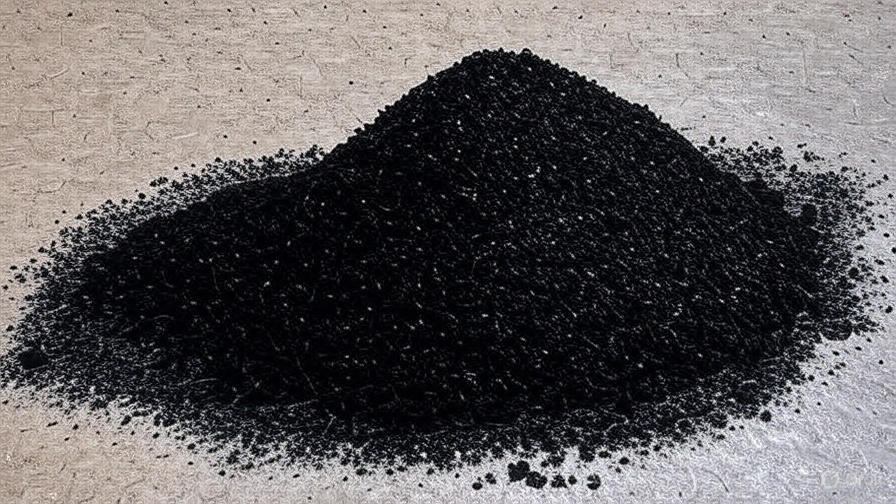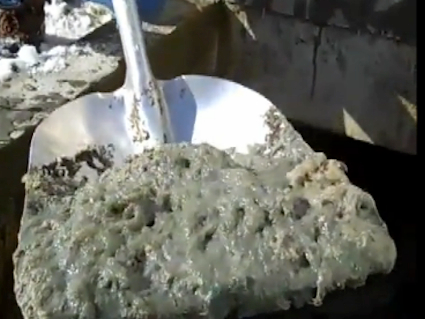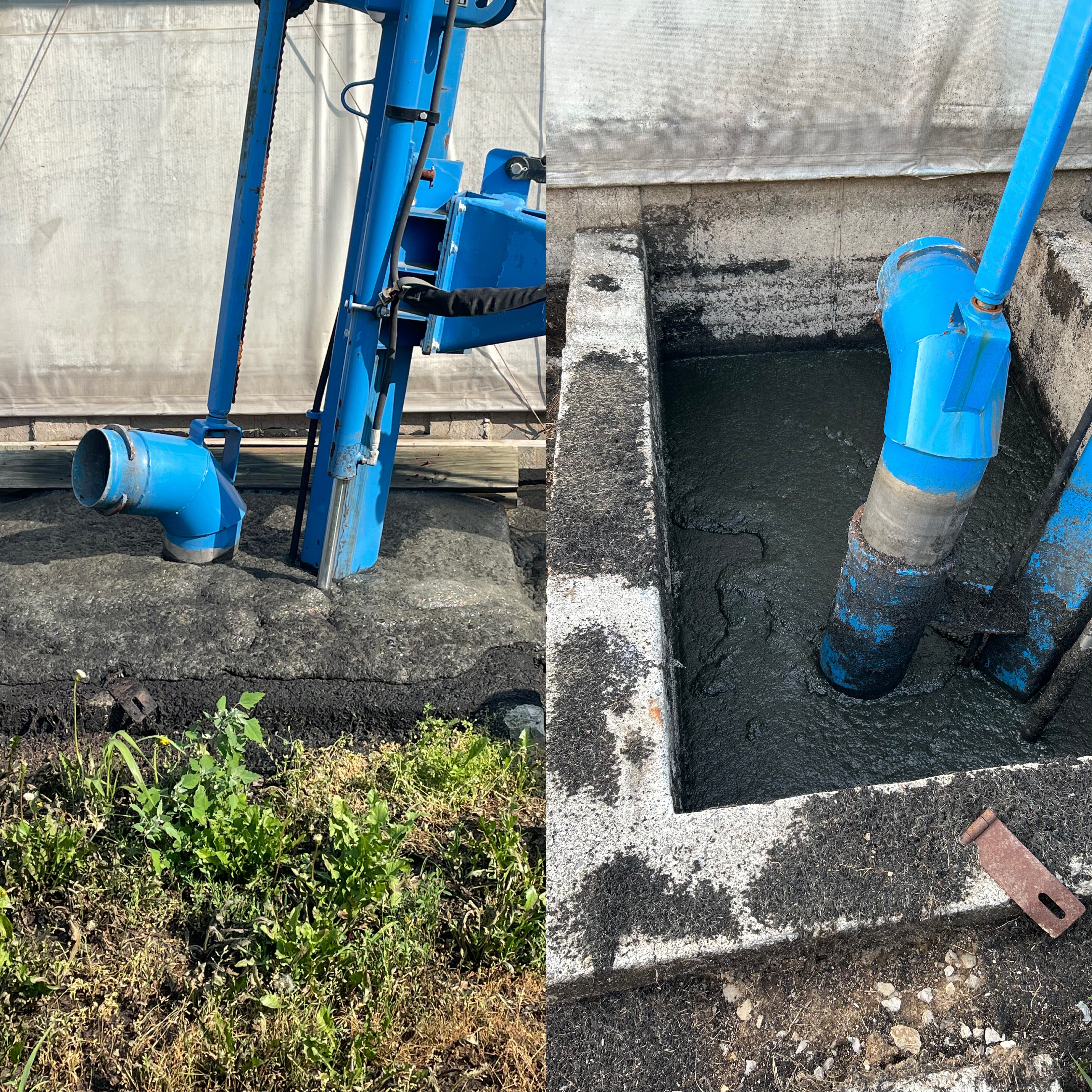Manure is a powerhouse of nutrients for crops, packed with essential elements like nitrogen, phosphorus, and potassium that can boost soil fertility and reduce the need for expensive synthetic fertilizers. However, as any livestock producer knows, managing manure comes with its challenges: potent odors, harmful gas emissions like ammonia, solidification in pits, and other possible risks such as nutrient leaching or pathogen buildup. Traditional approaches often fall short, leading to lost nutrients and potential health hazards for animals and workers. So what are humic acids? They're a natural component derived from organic matter decomposition—that can transform manure from a problem into a premium resource. Drawing from scientific studies, humic acids may offer benefits for manure pits, but their potential is only realized when the right microbial partners are present, like those in NGA from Under the Slats.
The Benefits of Humic Acids in Manure Pits
Humic acids are complex organic molecules formed through the breakdown of plant and animal residues, often extracted from sources like vermicompost or leonardite. In manure management, they act as a stabilizer and enhancer, addressing many common pitfalls. For instance, humic acids help break down solid matter in manure pits by creating a more favorable environment for decomposition, reducing solidification and making handling easier. They also chelate nutrients—binding them in stable forms—to prevent leaching into groundwater, while mitigating the impact of toxins like antibiotics or heavy metals that might be present in livestock waste. This not only protects the soil but also preserves valuable nutrients for future crop use.
One key advantage is odor and gas control. Ammonia emissions from manure can harm livestock health, contributing to respiratory issues and reduced productivity. Studies show that humic acids, when combined with manure slurries, can significantly reduce these emissions by enhancing nutrient bonding and limiting volatilization. In dairy operations, for example, applying humic acids to slurry has led to lower ammonia losses and improved forage yields like alfalfa, demonstrating both economic and ecological gains. Similarly, in composting cattle manure, humic acids accelerate the conversion of organic matter into stable humus, boosting overall decomposition efficiency and reducing harmful gases. Nutrient stabilization is another standout feature. Fresh manure often loses much of its nitrogen through volatilization or fixation, dropping from an initial value of 20 lbs per 1,000 gallons to just 10 lbs available after application. Humic acids help stabilize nitrogen, much like they do in urea fertilizers, ensuring more is available for crops. Research on continuous cropping systems reveals that humic acids increase soil organic matter, enhance phosphorus availability, and improve overall nutrient uptake, leading to higher yields and better plant quality over time. In manure-specific contexts, combining humic acids with cattle or poultry waste has shown improved calcium and nutrient content in crops, with benefits extending to soil pH balance and organic carbon levels.
Environmental concerns, like pathogens and hormones in manure, are also alleviated. Humic acids lessen the impact of these constituents by binding them and promoting safer breakdown, reducing risks to human health and water quality. In composting trials with microbial inoculants, humic acids have accelerated the degradation of estrogens—common in livestock waste—in cold climates, highlighting their role in sustainable waste treatment.
Why Humic Acids Need the Right Microbes to Thrive
While humic acids play a role in better manure management, their effectiveness hinges on microbial activity. These acids don't decompose solids or neutralize gases on their own; instead, they create an optimal environment that stimulates beneficial microbes to do the heavy lifting. Trace minerals in humic products energize microbes, while the acids' structure protects them from deactivation by manure's harsh elements, like high ammonia or toxins. Scientific studies confirm that humic acids boost soil enzyme activities—such as urease, sucrase, and phosphatase—which are produced by microbes and essential for breaking down organic matter. In manure composting, humic acids shift bacterial communities toward more efficient decomposers, like Proteobacteria and Firmicutes, enhancing humification and nutrient cycling.
However, not all microbes are created equal. Without the right strains—those specialized in manure breakdown—humic acids' benefits can be limited. For example, in anaerobic pit conditions, specific bacteria are needed to reduce methane emissions or degrade complex organics. Research shows that humic acids enrich microbial diversity, favoring beneficial fungi and bacteria, but they rely on existing or introduced microbes to fully activate processes like nitrogen stabilization or pathogen suppression. In essence, humic acids are like a catalyst—they amplify microbial work but can't replace it.
This is where products like NGA come in. As a microbial solution tailored for livestock manure, NGA introduces a blend of robust, manure-specific microbes that thrive in pit environments. These include strains from Proteobacteria and other phyla known for efficient decomposition, gas reduction, and nutrient transformation. When combined with humic acids, NGA's microbes supercharge the process: solids break down faster, odors diminish, and nutrients are locked in for superior fertilizer value. Field trials and studies on similar microbial-humic combinations show reduced ammonia by up to 50%, faster composting, and healthier soil microbiomes. For producers, this means easier pit management, lower costs, and a more sustainable operation.
Making Humic Acids Work for Your Operation
To harness humic acids in your manure pits, start with soil testing to gauge nutrient levels and microbial health—over-application of phosphorus from repeated manure use can build up without proper management. Incorporate humic-based products during storage or composting, and pair them with microbial inoculants like NGA for optimal results. In a three-year study on humic acid applications, consistent use improved microbial diversity and enzyme activity, leading to sustained yield gains. Remember, the goal is balance: humic acids set the stage, but microbes steal the show.
At Under the Slats, we're committed to turning manure challenges into opportunities. Request a call to see how NGA can improve your manure pit health. Together, we can build healthier soils, happier livestock, and a brighter future for your farm.
Sources Summary:
- Humic Acid Fertilizer Improved Soil Properties and Soil Microbial Diversity of Continuous Cropping Peanut: A Three-Year Experiment
- Humic Acids Combined with Dairy Slurry as Fertilizer Can Increase Alfalfa Yield and Reduce Nitrogen Losses
- The role of cattle manure-driven polysaccharide precursors in humus formation during composting of spent mushroom substrate
- Cattle Manure Fermented with Biochar and Humic Substances Improve the Crop Biomass, Microbiological Properties and Nutrient Status of Soil
- Influence of humic acid and poultry manure on nutrient content and their uptake by T. aman rice
- Impact of microbial inoculants combined with humic acid on the fate of estrogens during pig manure composting under low-temperature conditions
- Comparing bacterial dynamics for the conversion of organics and humus components during manure composting from different sources
- Interactions between Humic Substances and Microorganisms and Their Implications for Nature-like Bioremediation Technologies
- Impacts of humic-based products on the microbial community structure and functions toward sustainable agriculture




